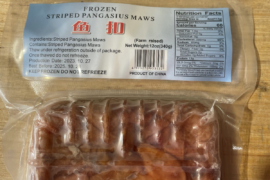Marianne LaCroix has officially been named the executive director of the Maine Lobster Marketing Collaborative (MLMC). She has served as interim director of the Portland-based organization since February, stepping in following the resignation of Matt Jacobson.

“There are currently many challenges for our industry, and it is important that we speak with one voice. Under Marianne’s leadership, the Maine Lobster Marketing Collaborative will continue to play a key role in the promotion and protection of our state’s iconic seafood,” said MLMC Chairman Frank Gotwals.
LaCroix has been active in the sector since the MLMC’s founding in 2013, serving as its director of marketing. Prior to that she spent seven years as the Maine Lobster Promotion Council’s marketing director. The Boston College graduate has also worked in marketing roles at Holt, Hughes & Stamell and Duval & Partners.
Maine ranks as the largest lobster producing state in the USA, accounting for approximately 80% of the nation’s total catch. Harvesters brought in more than $484 million worth of the prized shellfish in 2018, an increase of $46 million over the previous year. Landings also reached historic levels at just under 120 million pounds. When combined with the value added by processors and dealers, the overall contribution to the state’s economy totaled nearly $2 billion.
“Our lobster industry is active year-round, though most volume is landed in the summer and fall,” LaCroix told FrozenFoodsBiz.com during the recently held Seafood Expo North America in Boston. “Consumers increasingly appreciate the sweet flavor and tenderness of Maine New Shell Lobster, which becomes available after old shells are shed and new ones are grown in the summertime.”
The MLMC has a budget of approximately $2 million to promote the state’s lobster image and brand awareness among end users far and wide and increase demand in foodservice and retail sectors. It is funded by fees paid by harvesters, dealers and processors, with much of the support generated from commercial harvester license surcharges.





